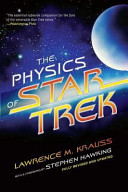Production Costs for Antimatter
Fermilab produces antiprotons in medium-energy collisions of protons with a lithium target. Every now and then these collisions will produce an antiproton, which is then directed into the storage ring beneath the buffalo. When operating at average efficiency, Fermilab can produce about 50 billion antiprotons an hour in this way. Assuming that the Antiproton Source is operating about 75 percent of the time throughout the year, this is about 6000 hours of operation per year, so Fermilab produces about 300,000 billion antiprotons in an average year.
The cost of those components of the Fermilab accelerator that relate directly to producing antiprotons is about $500 million, in 1995 dollars. Amortizing this over an assumed useful lifetime of 25 years gives $20 million per year. The operating cost for personnel (engineers, scientists, staff) and machinery is about $8 million a year. Next, there is the cost of the tremendous amount of electricity necessary to produce the particle beams and to store the antiprotons. At current Illinois rates, this costs about $5 million a year. Finally, related administrative costs are about $15 million a year. The total comes to some $48 million a year to produce the 300,000 billion antiprotons that Fermilab annually uses to explore the fundamental structure of matter in the universe. This works out to about 6 million antiprotons for a dollar!
Now, this cost is probably higher than it would need to be. Fermilab produces a high-energy beam of antiprotons, and if we required only the antiprotons and not such high energies we might cut the cost, perhaps by a factor of about 2 to 4. So, to be generous, let's assume that using today's technology, one might be able to get from 10 million to 20 million antiprotons for a buck, wholesale.
The next question is almost too obvious: How much bang for this buck? If we convert entirely the mass of one dollar's worth of antiprotons into energy, we would release approximately 1/1000 of a joule, which is the amount of energy required to heat up about 1/4 of a gram of water by about 1/1000 of a degree Celsius. This is nothing to write home about.
Perhaps a better way to picture the potential capabilities of the Fermilab Antiproton Source as the nucleus of a warp core is to consider the energy that might be generated by utilizing every antiproton produced by the Source in real time. The Antiproton Source can produce 50 billion antiprotons an hour. If all these antiprotons were converted into energy, this would result in a power generation of about 1/1000 of a watt! Put another way, you would need about 100,000 Fermilab Antiproton Sources to power a single lightbulb! Given the total annual cost of $48 million to run the Antiproton Source, it would cost at the present time more than the annual budget of the U.S. government to light up your living room in this way.
Notes:
Fermilab produces antiprotons in atomic collisions, here's how many and how much it costs to produce them.
Folksonomies: physics atomic collisions antimatter
Taxonomies:
/science/physics (0.516837)
/food and drink (0.379052)
/business and industrial/company/earnings (0.378175)
Keywords:
antiprotons (0.998719 (positive:0.140270)), Antiproton Source (0.845441 (positive:0.707585)), Fermilab (0.808162 (positive:0.206507)), Fermilab Antiproton Sources (0.791378 (neutral:0.000000)), Fermilab Antiproton Source (0.781678 (positive:0.707585)), Antimatter Fermilab (0.686074 (negative:-0.200686)), assumed useful lifetime (0.670593 (positive:0.245169)), Fermilab accelerator (0.666603 (positive:0.378435)), related administrative costs (0.662180 (neutral:0.000000)), current Illinois rates (0.659452 (neutral:0.000000)), total annual cost (0.639718 (neutral:0.000000)), medium-energy collisions (0.609729 (negative:-0.347488)), atomic collisions (0.608342 (negative:-0.200686)), Production Costs (0.601252 (negative:-0.200686)), lithium target (0.598854 (negative:-0.347488)), storage ring (0.598155 (neutral:0.000000)), average efficiency (0.588920 (neutral:0.000000)), particle beams (0.586515 (positive:0.542102)), degree Celsius (0.586061 (neutral:0.000000)), single lightbulb (0.585544 (neutral:0.000000)), high-energy beam (0.585037 (positive:0.573370)), fundamental structure (0.584513 (positive:0.262984)), high energies (0.584387 (neutral:0.000000)), U.S. government (0.581059 (neutral:0.000000)), potential capabilities (0.580312 (positive:0.707585)), power generation (0.579437 (positive:0.406255)), warp core (0.579227 (positive:0.707585)), present time (0.577230 (neutral:0.000000)), annual budget (0.576760 (neutral:0.000000)), better way (0.576613 (positive:0.707585))
Entities:
Fermilab Antiproton Source:PrintMedia (0.841770 (positive:0.707585)), Antimatter Fermilab:Company (0.774742 (positive:0.072045)), Fermilab Antiproton Sources:Company (0.502729 (neutral:0.000000)), Fermilab:Company (0.333689 (positive:0.378435)), Illinois:StateOrCounty (0.174008 (neutral:0.000000)), U.S. government:Organization (0.156304 (neutral:0.000000)), real time:FieldTerminology (0.153915 (positive:0.707585)), $48 million:Quantity (0.153915 (neutral:0.000000)), $500 million:Quantity (0.153915 (neutral:0.000000)), 1995 dollars:Quantity (0.153915 (neutral:0.000000)), $15 million:Quantity (0.153915 (neutral:0.000000)), $20 million:Quantity (0.153915 (neutral:0.000000)), $5 million:Quantity (0.153915 (neutral:0.000000)), $8 million:Quantity (0.153915 (neutral:0.000000)), 6000 hours:Quantity (0.153915 (neutral:0.000000)), 75 percent:Quantity (0.153915 (neutral:0.000000)), one dollar:Quantity (0.153915 (neutral:0.000000)), 25 years:Quantity (0.153915 (neutral:0.000000))
Concepts:
Time (0.987089): dbpedia | freebase | opencyc
Million (0.965598): dbpedia | freebase | opencyc
Antiproton (0.937301): dbpedia | freebase
CERN (0.915366): geo | website | dbpedia | freebase | opencyc | yago | geonames
Proton (0.885140): dbpedia | freebase | opencyc
Antimatter (0.768939): dbpedia | freebase
Present (0.734445): dbpedia | freebase | opencyc
Fermilab (0.720381): geo | website | dbpedia | freebase | opencyc | yago





